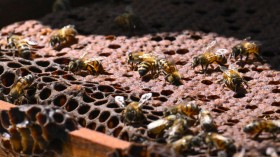Researchers have found that crayfish can do something that no human on earth could hope to achieve. These tiny crustaceans can grow new brain cells from blood alone. This is a remarkable find, because neurologists have thought for more than a century that new neural material could only be produced by specialized stem cells in the spine and brain.
A study published in the journal Developmental Cell details how researchers in an international effort thoroughly examined how crayfish regenerate neurons for their eye stalks and olfactory circuits.
Protruding on delicate stalks and tendrils from their exoskeleton, these neurons are particularly vulnerable to damage among all kinds of crustaceans and even insects. According to the study, past research has revealed that organisms with this vulnerability problem replace damaged neurons with a supply of undeveloped neurons (precursor cells) found in a clump at the base of the brain called "the niche."
The team behind this particular study found that blood cells are attracted to the niche and serve as a sort of enabler and transportation system for new neurons. They also found that there are no adult stem cells - factories for neural material - within or around the niche. With these baby neurons being regularly pulled from their nursery, reason says that eventually the niche would be empty.
However, when the scientists altered the number of blood cells coursing through the niche, they found that it could alter the number of cells located there. Namely, if more blood flowed to the niche, more precursor cells were inexplicably found within the nursery.
To better determine the explanation behind this phenomenon, they extracted blood cells from donor crayfish and marked them with a DNA dye. These cells were then transfused into the subjects of the study.
More than a week later, the researchers found that the donor blood cells had found their way into the neural nursery. Soon after, new precursor cells were found boasting the same genetic marker, indicating that these baby neurons somehow were created from the donor blood cells.
"This could be another example of nature finding a way of doing something that we have to do by laboratory manipulations," Charles ffrench-Constant, an expert who was not part of the paper, explained to New Scientist. "If one could identify the mechanism, it might point us in the direction of new, better therapies."
However, he noted that identifying this remarkable and natural phenomenon is only the first step in a long struggle to truly understanding it.
© 2024 NatureWorldNews.com All rights reserved. Do not reproduce without permission.





